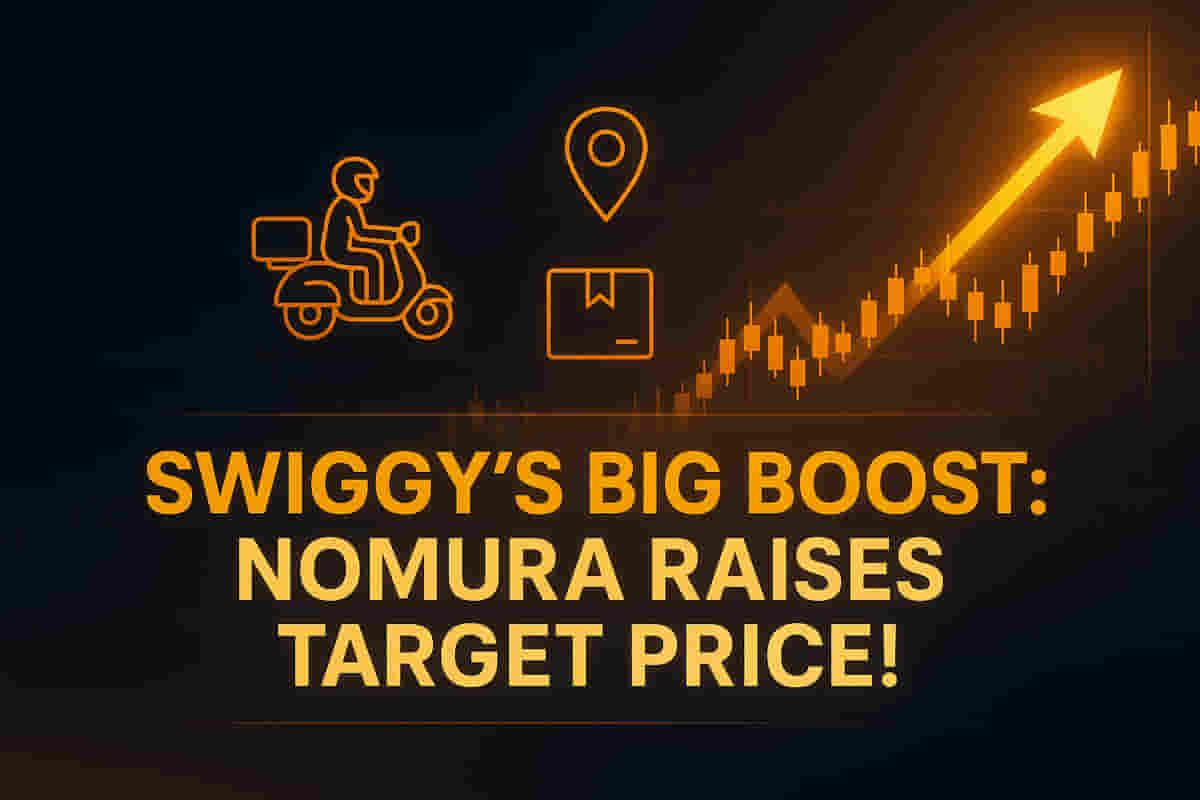Nomura Boosts Swiggy's Target Price to ₹560, Reiterates 'Buy' Rating
Tech
|
31st October 2025, 3:26 AM

▶
Short Description :
Detailed Coverage :
Nomura, a Japanese brokerage firm, has raised its target price for Swiggy to ₹560 from the previous ₹550, while keeping its 'Buy' recommendation. This optimistic outlook is based on three key factors: strong momentum in Swiggy's food delivery operations, a planned fund-raise to bolster its quick commerce (QC) business, and enhanced clarity on the company's path to profitability.
Swiggy's food delivery segment showed robust growth in the September quarter (Q2FY26), with Gross Order Value (GOV) increasing by 6% quarter-on-quarter and 19% year-on-year. Monthly Transacting Users (MTU) also rose sequentially. The firm's take rate improved slightly, and its Adjusted Ebitda margin saw an uptick. Nomura projects sustained GOV growth of 19-20% annually for the food delivery segment over FY26–27.
The company is planning to raise approximately ₹10,000 crore to invest in its quick commerce arm, a strategic move given the intense competition from players like Zepto and Zomato's Blinkit. This capital infusion is expected to strengthen Swiggy's competitive position.
Nomura also highlighted better visibility on Swiggy's profitability, attributing it to disciplined execution, operational efficiency, and improving contribution margins. The brokerage acknowledged risks such as intensified competition in quick commerce and potential macroeconomic slowdowns.
Impact This news has a positive impact on investor sentiment towards Swiggy and the online delivery sector in India. The target price hike and 'Buy' rating from a respected brokerage firm signal confidence in Swiggy's growth and profitability prospects. Rating: 7/10
Difficult Terms Explained:
SOTP (Sum of the Parts): A valuation method where a company's total value is calculated by adding up the estimated values of its individual business segments. Target Price (TP): The price at which a stock analyst or brokerage firm expects a stock to trade in the future, usually within a 12-month period. ‘Buy’ rating: An investment recommendation from a financial analyst or brokerage firm suggesting that investors should purchase a particular stock. Food Delivery (FD): The business segment focused on taking food orders online and delivering them to customers. Quick Commerce (QC): A rapid delivery service, typically for groceries and convenience items, aiming for delivery within minutes (e.g., 10-30 minutes). Gross Order Value (GOV): The total value of all orders placed through a platform before any deductions or adjustments. Quarter-on-Quarter (Q-o-Q): A comparison of a metric from one financial quarter to the previous one. Year-on-Year (Y-o-Y): A comparison of a metric from one period (like a quarter) to the same period in the previous year. Monthly Transacting Users (MTU): The number of unique users who made at least one transaction in a given month. Take Rate: The percentage of the gross order value that the platform keeps as revenue, often including delivery fees. Basis Points (bps): A unit equal to 1/100th of a percentage point. 10 bps = 0.1%. Contribution Margin (CM): The revenue remaining after deducting variable costs associated with selling a product or service, used to cover fixed costs and generate profit. Adjusted Ebitda: Earnings Before Interest, Taxes, Depreciation, and Amortization, adjusted for certain extraordinary or non-recurring items to better reflect operational performance. Net Order Value (NOV): The gross order value minus refunds, cancellations, and other adjustments. Breakeven: The point at which total revenues equal total costs, meaning there is no net loss or gain. Fund-raise: The process of obtaining financial capital, typically by issuing shares or taking out loans. Macroeconomic slowdown: A general decrease in economic activity within a country or globally.